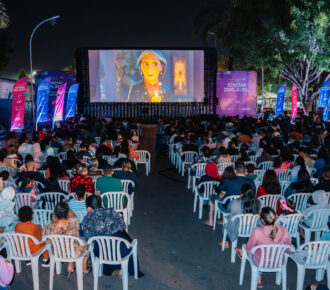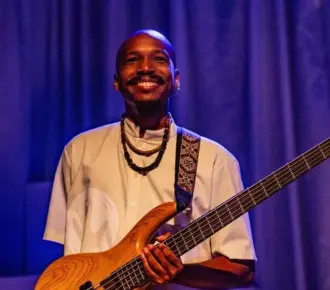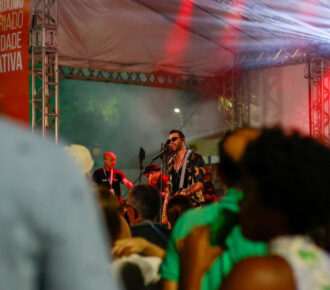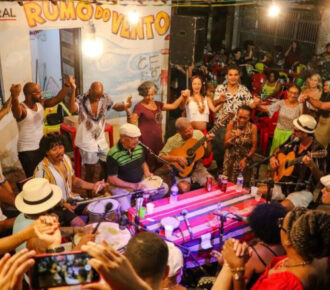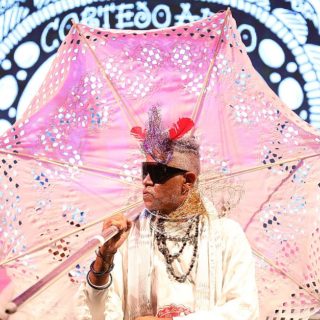
Salvador’s Urban Art Route
Super interesting works of art mix with the Historic Center of Salvador in a large open-air gallery
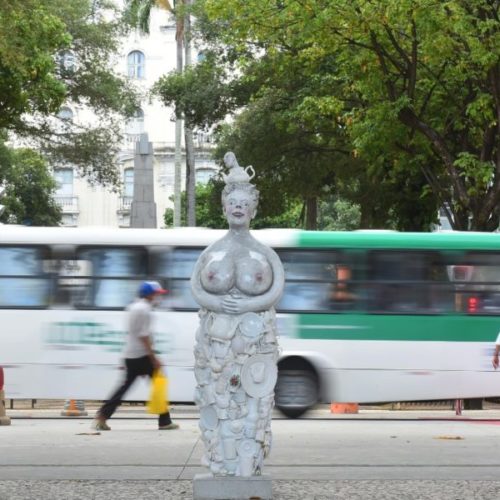
Perhaps one of the most sought-after and best known places in Salvador is its Historic Center. Strolling through the sloping streets of Pelourinho getting to know every inch of this cultural and ancestral place is the priority route for visitors and residents. But, after enjoying the view from the top of the Lacerda Elevator, and from Praça da Cruz Caída or the Terrace of Casa do Carnaval, besides looking at the beauties of All Saints Bay, have you ever wondered what there is to do down there in the Comércio neighborhood? Because we can answer you: many things!
Comércio was the first organized business district in the country and had an absolute role in this segment until the 1960s. Today, after undergoing a process of modernization and requalification through improvements in infrastructure, mobility, enhancement of public assets, structuring equipment, in addition to cultural actions and events, the neighborhood has been changing.
So, imagine a walk through this neighborhood which is a synthesis of Salvador: a mixture of modernity, history and heritage. Mercado Modelo, Tourist Terminal and Conceição da Praia Church are famous tourist spots there and, recently, a real open-air gallery was launched and is available for those who want to appreciate works of art outside traditional tours. Streets and squares in the neighborhood are gaining works of art in the most diverse languages, and they will be permanently in place.
Ver essa foto no Instagram
The “RUA – Roteiro Urbano de Arte” Project came to pay homage to historical plastic artists who, with their works, contributed to the construction of Bahian visual imagery, and, at the same time, to reveal the contemporary artistic production that inherited this legacy. In this first moment, it contemplates the work of seven artists and honors seven others.
There are installations, sculptures, artistic interventions and graffiti by relevant Bahian artists of today, designed to occupy specific spaces in the Comércio neighborhood. The works dialogue with the architectural surroundings and with the concepts related to the respective honorees.
The project, developed by the Gregório de Mattos Foundation (FGM), with the curatorship of Daniel Rangel, a Bahian living in São Paulo, is part of the foundation’s policy to enhance the city center. Visit Salvador da Bahia takes you to RUA – Roteiro Urbano de Arte de Salvador so that, in addition to getting to know the neighborhood better, you can take beautiful photos and learn the concept behind each work.
A contemporary visual reverence
Our tip is to start with the “Plano Inclinado Gonçalves”, right next to Casa do Carnaval. Thus, you can even visit the first revelry museum before taking the cable car to Comércio. Here we are in Area 1 of the map.
Viva Páride Bernabó – Bel Borba honors Carybé
The installation created by the artist for the “RUA – Roteiro Urbano de Arte” Project, called “Viva Páride Bernabó”, changes the landscape of a postcard – the Plano Inclinado Gonçalves – that connects the Upper City, Pelourinho, with the Lower City. A work that breathes its surroundings, with a palette of colors that are present in Pelourinho and in the clothes of passers-by. The snake shape takes advantage of the sloping horizontal architecture of the place and the movement of the cable car to create a dynamic kinetic color.
“Viva Páride Bernabó” pays tribute to Carybé, whose Christian name was Hector Julio Páride Bernabó, an artist who, despite not being born in Bahia, has traits that are identified with the Bahian culture imagery. The relationship between Carybé and Bel Borba goes beyond the fact of addressing a common theme – Bahianity. It also appears in the subtlety with which both formalize their works.
After going down the slope, you arrive at Rua Francisco Gonçalves, where is the second stop of this tour. On the map, we are in Area 2.
Juntó – Ayrson Heráclito honors Mestre Didi
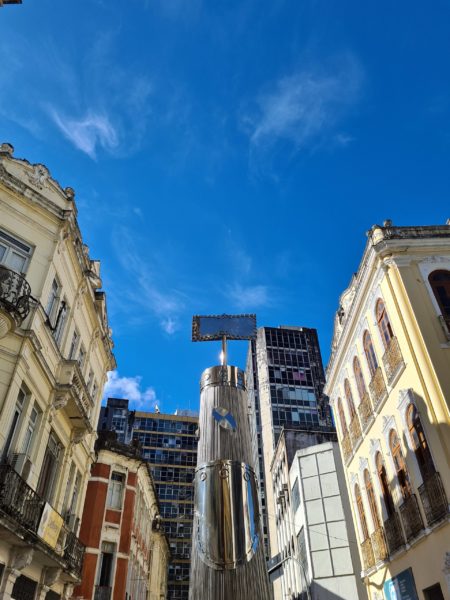
The sculpture “Juntó”, by Ayrson Heráclito, is a work that refers to a totem or column with sacred emblems. The word “juntó” refers to the second orixá of people, responsible for their balance and for accompanying the main orixás (the ones that guide their will). The sculpture, in the scope of the “RUA – Roteiro Urbano de Arte” Project, is a tribute to the sculptor, Bahian priest and writer, Mestre Didi.
The sensation of suspension and elevation caused by the work scale is formally related to the eguns, entities with which Mestre Didi related, such as his “Xaxará de Obaluaiyê” (his juntó) and the “Oxé” placed on the sculpture’s “head”, which alludes directly to Xangô, who was his main orixá.
The Afro-Brazilian culture contemporary redefinition is the central element of the artistic work of Ayrson Heráclito, who has been translating and updating the theme through current languages. The meeting of Mestre Didi and Heráclito is made possible through an aesthetic and conceptual perception that intersects in the temporal circularity as in a xirê, a candomblé ritual that connects men and deities.
On the same street, we have another work, installed purposefully at one of the many crossroads that exist in the Lower City. We are now in Area 3 of the map.
Laroyê – Ray Vianna honors Mario Cravo Júnior
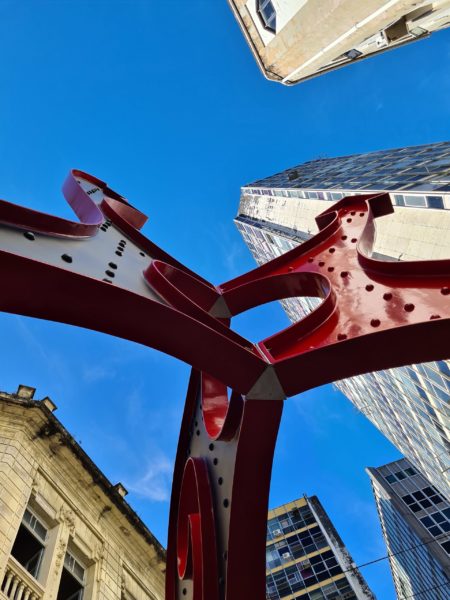
The twisted movement of the shapes, the colors used and the sculpture title “Laroyê” is a direct reference to Exu, orixá messenger between heaven and earth, responsible for opening the paths, and who lives at the crossroads. Ray Vianna’s sculpture was created especially for the “RUA – Roteiro Urbano de Arte” Project.
“Laroyê” also pays homage to the artist Mario Cravo Júnior, who was one of the most important sculptors in Bahia and who was a great blacksmith of “exus”. Cravo Júnior’s influence on Ray Vianna’s work goes beyond the sculptural issue, and is also found in the artistic will to occupy the urban space. Organic sculptors, from different times, who reveal through their works an improbable lightness of heavy materials, such as steel, concrete and fiberglass, and others that are less rigid, such as pencils, paints and brushes.
Graffiti connection
It is at this moment of the tour that the graffiti interventions begin. Idealized and produced by artists Bigod, Júlio and Prisk (MUSAS), the arts made by them are also connectors between one installation and another. When you least expect it, a colorful wall or path appears, painted on the asphalt, taking you through the neighborhood. The drawings are an invitation to slow down and admire the art that is presented, as part of the urban scene.
MUSAS artists performed at Avenida da França, Avenida Estados Unidos, Rua Miguel Calmon and Rua Conselheiro Dantas. Here in this itinerary, their work takes you to Rua do Ourives, Area 4 of the map.
Jardim para alguns silêncios (Garden for some silences) – Lanussi Pasquali pays homage to Joãozito
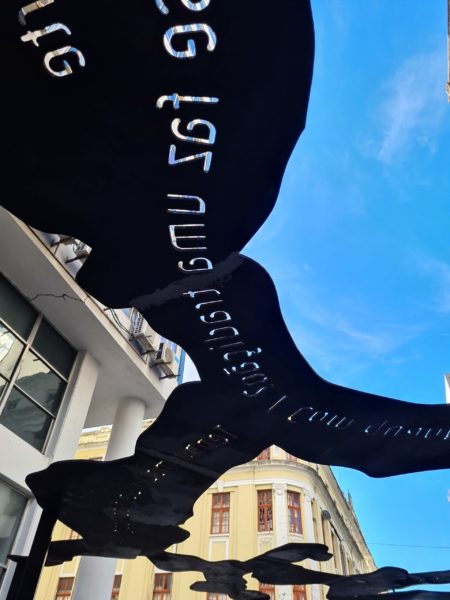
The artistic intervention “Jardim para alguns silêncios”, by Lanussi Pasquali, proposes a radical and organic split in the middle of the concrete landscape of the Lower City. The rhizomatic design of the garden and poetic sculpture are mirrored and the work becomes a fissure in time and space, rescuing plants and words that have always been there.
The poems cast in the iron structure, which move and deform according to the sun and the incidence of light, are authored by the visual artist Joãozito, who is honored here. A good suggestion is to arrive at noon, so the words are perfectly arranged on the floor.
The installation was designed especially to occupy the space where it is installed, a specific work of art (site specific), created within the scope of the “RUA – Roteiro Urbano de Arte” Project. Lanussi Pasquali’s work has been closely linked to that of Joãozito in recent years, since they were partners in art and life, until Joãozito’s passing.
Joãozito’s words here echo, but his ideas also become, in some way, reality, since he dreamed of projects of artistic occupation in the area of Comércio since the 90s. “Jardim para alguns silêncios” is, therefore, a project conceived by Lanussi, and more than a tribute, it is a continuation of the work of which Joãozito is also part.
Thus, we continue through the graffiti of Bigod, Julio and Prisk (MUSAS) to Praça da Inglaterra (Rua Estados Unidos), Area 5 of the map.
Haras para M.B.O – Iêda Oliveira honors M.B.O.
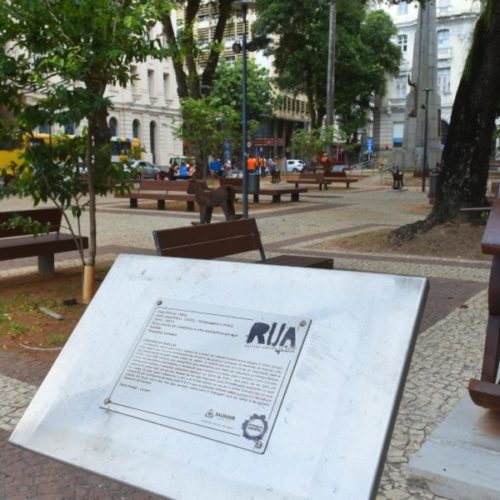
The installation “Haras para M.B.O” transports Praça da Inglaterra to another space and another time. A trip that takes us directly to the universe of squares and amusement parks in the inland cities, but that, in the past, were also seen in the capital. The coolest part of this work is that it is interactive, and children and adults can “play” on the equipment.
Popular culture is the source of inspiration for visual artist Iêda Oliveira, who resignifies its elements through contemporary concepts, such as interactivity and seriality. The installation that the artist conceived for the project pays tribute to Bahian artists and popular artisans in the figure of M.B.O., who besides being an important naïve art painter, was her father. Despite being culturally inspired by the environment in which she was raised, it was Iêda who influenced her father to become an artist or perhaps convinced him that he had always been one.
The proposal of “Haras para M.B.O” is for people to reflect on the presence of popular culture in our daily lives, but also to participate and interact with the works and become co-authors of them.
Right in front, also in Praça da Inglaterra, but at Rua Miguel Calmon, we reached Area 6. Here, you also see many graffiti interventions made especially for the project.
Maternos – Zuarte honors Reinaldo Eckenberg
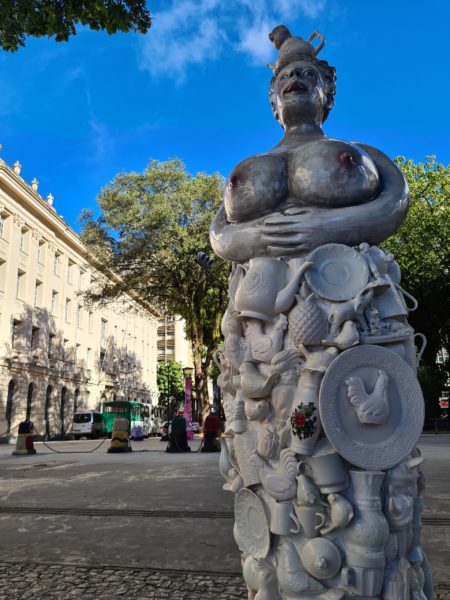
At first glance, the series of five sculptures called “Maternos” causes a strangeness to the viewer. Anthropomorphic figures that merge with utensils of daily use in an unlikely collage full of deformed curves. Gradually, the humor of the compositions comes out and a process of affective approach with the characters begins, which seem, after all, to have come from another planet.
In fact, the works were inspired by the surrealist figures of Reinaldo Eckenberg, an artist who modeled dreams and even those that looked like nightmares were full of humor. To honor the artist, Zuarte plunged into the kitschy psychedelic universe of Eckenberg’s imaginary to create the “Maternos” series.
With a trajectory that moves between visual arts and scenography, Zuarte is able to share creative feelings with great formal rigor and generosity. The artist appropriates an aesthetics with which he lived, absorbing and transforming, creating a kind of “Eckenberguian” anthropophagy.
Once again, the arts of MUSAS artists guide you to the next and last stop. We arrived at Area 7, Rua da Grécia.
Lágrimas – Vinicius S.A. honors Rubens Valentin
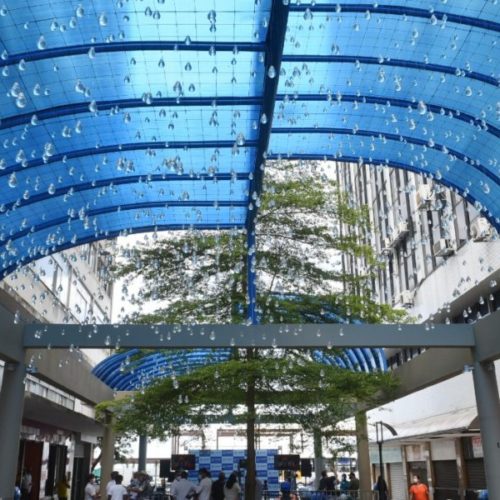
The installation “Lágrimas”, by Vinicius S.A., transports us to a dimension where time and space seem to have frozen before our eyes. A portal made of everyday elements, such as glass, nylon and water lamps, which create an immersive, mystical atmosphere.
The work “Lágrimas” has already been exhibited 18 times, in 15 different cities in Brazil, Germany and the United States, being visited by around 800,000 people. The assemblies vary according to the space, arriving in Salvador, in the heart of the Comércio district.
The formal beauty of the composition is enhanced by the incidence of luminosity that tears through the glass cluster like a beam of living energy present in the place. Tears activate a supra-religious ethereal peaceful feeling, which makes us reflect on the need to slow down in order to enjoy the present moment.
“Lágrimas” is a tribute to the artist Rubem Valentin. The approximations between both artists are found in the relationship they have with spirituality, in the formal concern and in the ability to manipulate space and time with their works.
The “RUA – Roteiro Urbano de Arte” Project is part of the Salvador City Hall’s campaign to enhance the city’s historic center, created to encourage residents and tourists to rediscover the region. This itinerary is an invitation to get to know the city from a different perspective, through works that speak not only of the expression and style of the artists, but help to tell the story of the First Capital of Brazil.
By Fernanda Slama
Portal content coordinator
Footnote:
The text was based on supporting material from the Gregório de Mattos Foundation (FGM), containing in-depth explanations about the “RUA – Roteiro Urbano de Arte” Project.
Special thanks to Fernando Guerreiro, president of FGM, and his team, who visited the facilities with us.

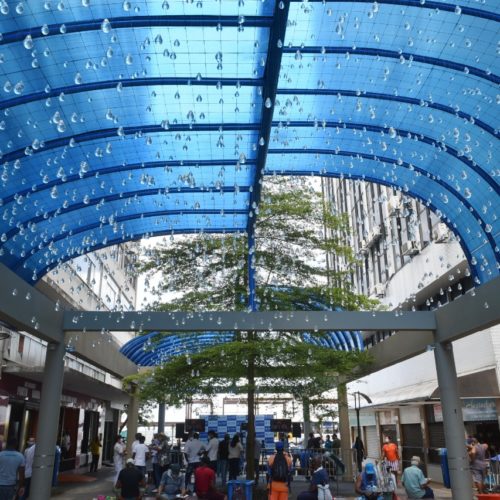
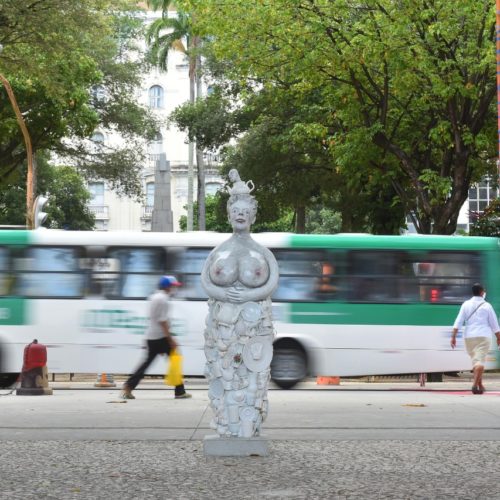
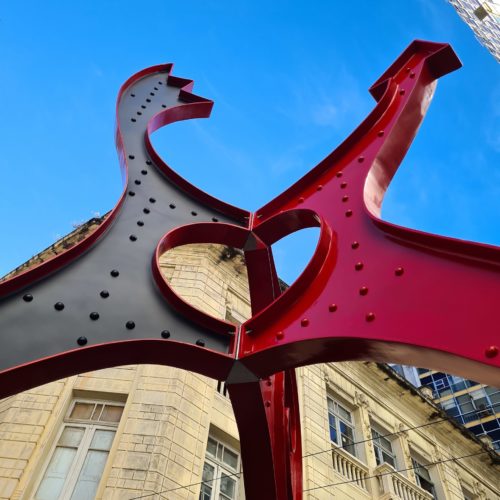
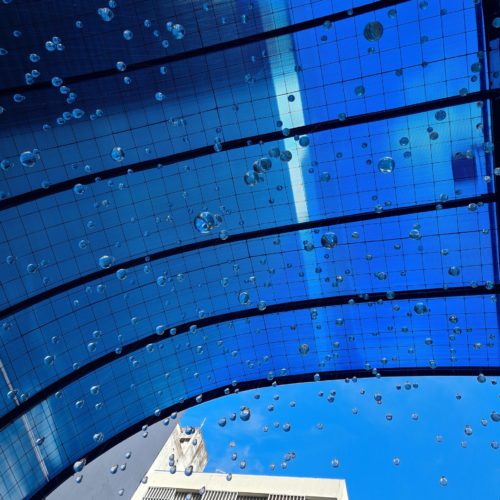
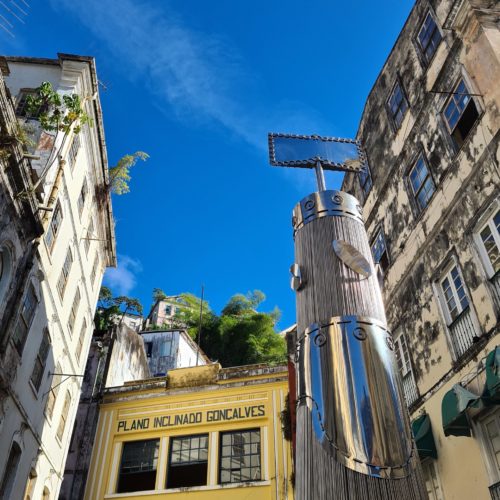
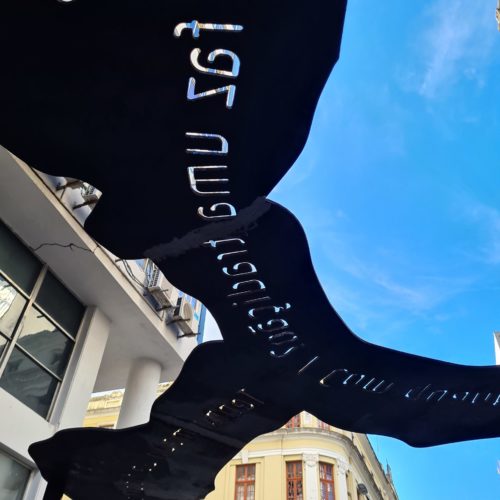
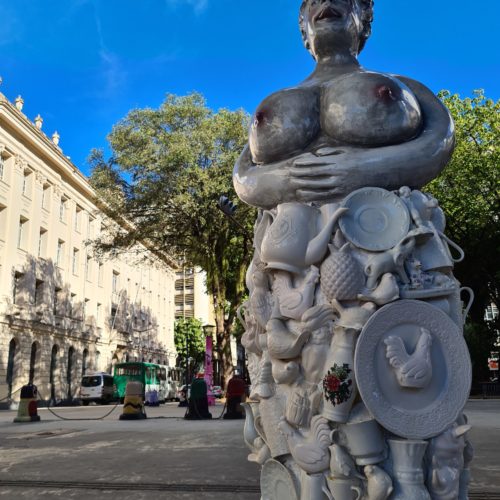
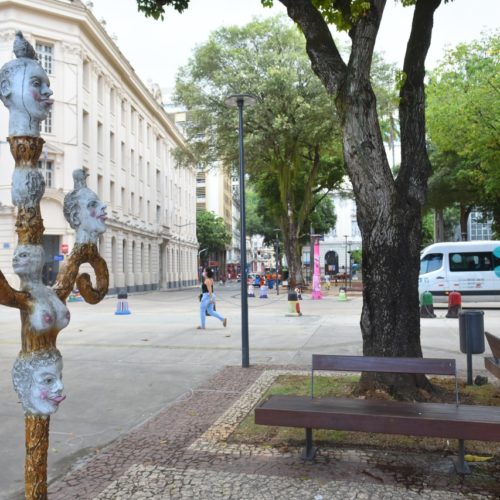
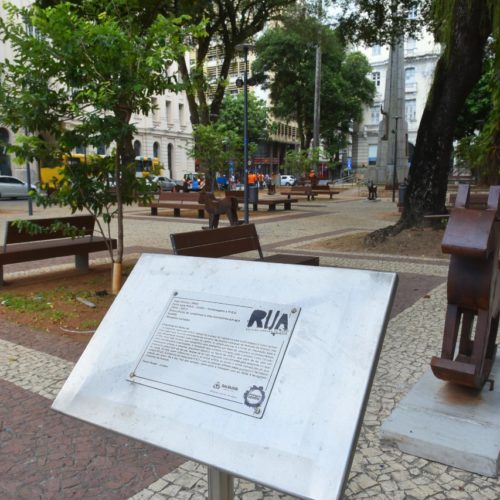
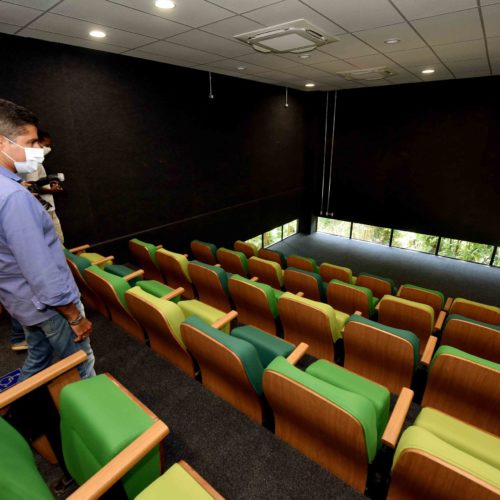
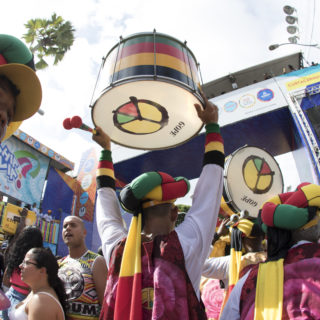
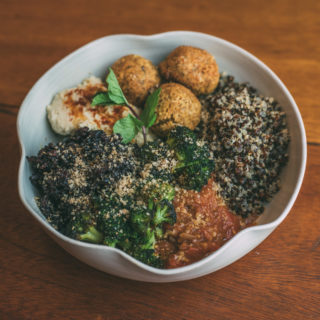
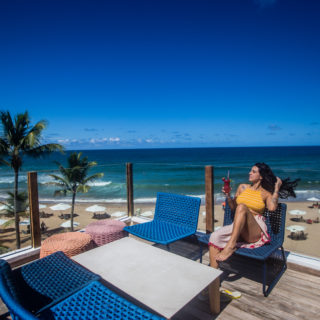












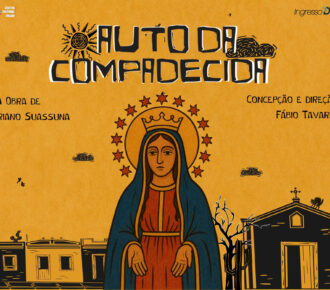
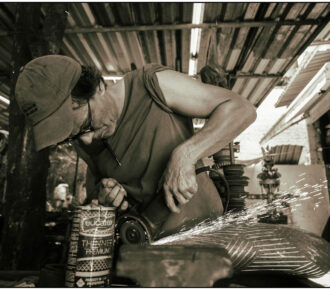
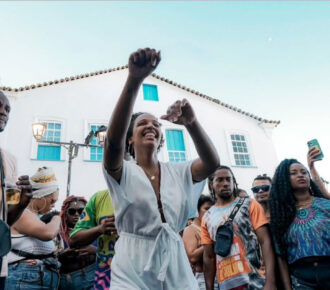
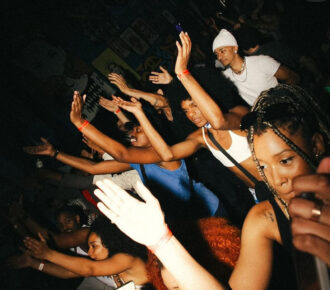
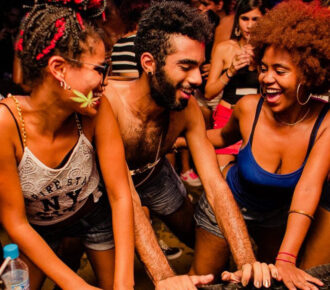
![Teatro Terceira Margem apresenta espetáculo [sem]DRAMA Teatro Terceira Margem apresenta espetáculo [sem]DRAMA](https://www.salvadordabahia.com/wp-content/uploads/2025/11/semdrama-330x290.jpeg)
